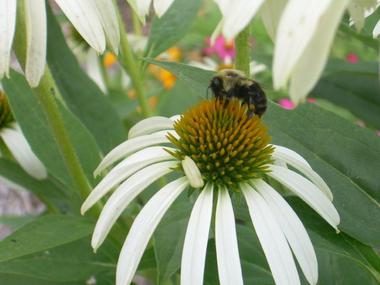The Birmingham Rose Society presents its annual Rose Show on Mother’s day weekend at the beautiful Birmingham Botanical Gardens.
beautiful Birmingham Botanical Gardens.
The judging is Saturday morning, but the festivities are all weekend! There are all sorts of categories ranging from “novice” to “experienced exhibitor” and also “artistic arrangements” and, a photography division.
Open Saturday 1-5 and Sunday 1-4.
By Bethany A. O’Rear
From The Jefferson County Extension Service
 Q. I want to include herbs in my garden and need to know more about requirements for growing them. I’m also interested in attracting pollinators, especially honeybees. Which herbs will provide food or habitat for them?
Q. I want to include herbs in my garden and need to know more about requirements for growing them. I’m also interested in attracting pollinators, especially honeybees. Which herbs will provide food or habitat for them?
A. With spring in full swing, honeybee populations in decline, and herbs gaining status with a variety of gardeners, this is a very pertinent question. Let’s break the answer into two parts, one to address the herbs, one for the honeybees.
Herbs have many attributes that contribute to their increasing popularity in gardens and landscapes. Their historic use, from primarily culinary and medicinal, to the 21st century has expanded the role of herbs. Today, we grow herbs (or “‘erbs”) for aesthetic reasons, for use in cooking (culinary), as medicinal, aromatics, ornamentals, household/industrial, and wildlife habitat.
Herbs are considered one of the easiest groups of plants to grow, and once established, most are considered low maintenance; they do very well with little water or fertilizer.
Requirements for growing herbs, regardless of reason, need to be considered before planting them in the ground. And, while herbs are adaptable to a range of soil and growing conditions, most don’t do well in poorly drained soil. Another limiting factor is the amount of sun available to them; if the site receives less than 6-8 hours of sun a day, look for another site or consider herbs that can handle light shade. The sun/shade factor is especially important for pollinators, including honeybees, since most of them are attracted to plants that flower in full sun conditions.
One other point to consider is soil; heavy clay is a challenging environment for most herbs. Make their life easier and more productive by planting herbs in raised beds or amending existing soil with well-composted organic matter to improve its porosity.
Herbs are a solution to the need expressed by many beekeepers; to increase nectar availability in an area. Herbs are versatile, blooming the same year they’re planted in many cases. With sufficient variety, an herb garden can have plants in bloom 10 months of the year, providing nectar and pollen sources for honeybees. However, not all herbs attract honeybees, so gardeners should pay attention to variety. Herbs such as basil, bee balm, hyssop (anise), mints, sage, and thyme are examples of bee favorites.

 Menu
Menu Search
Search



